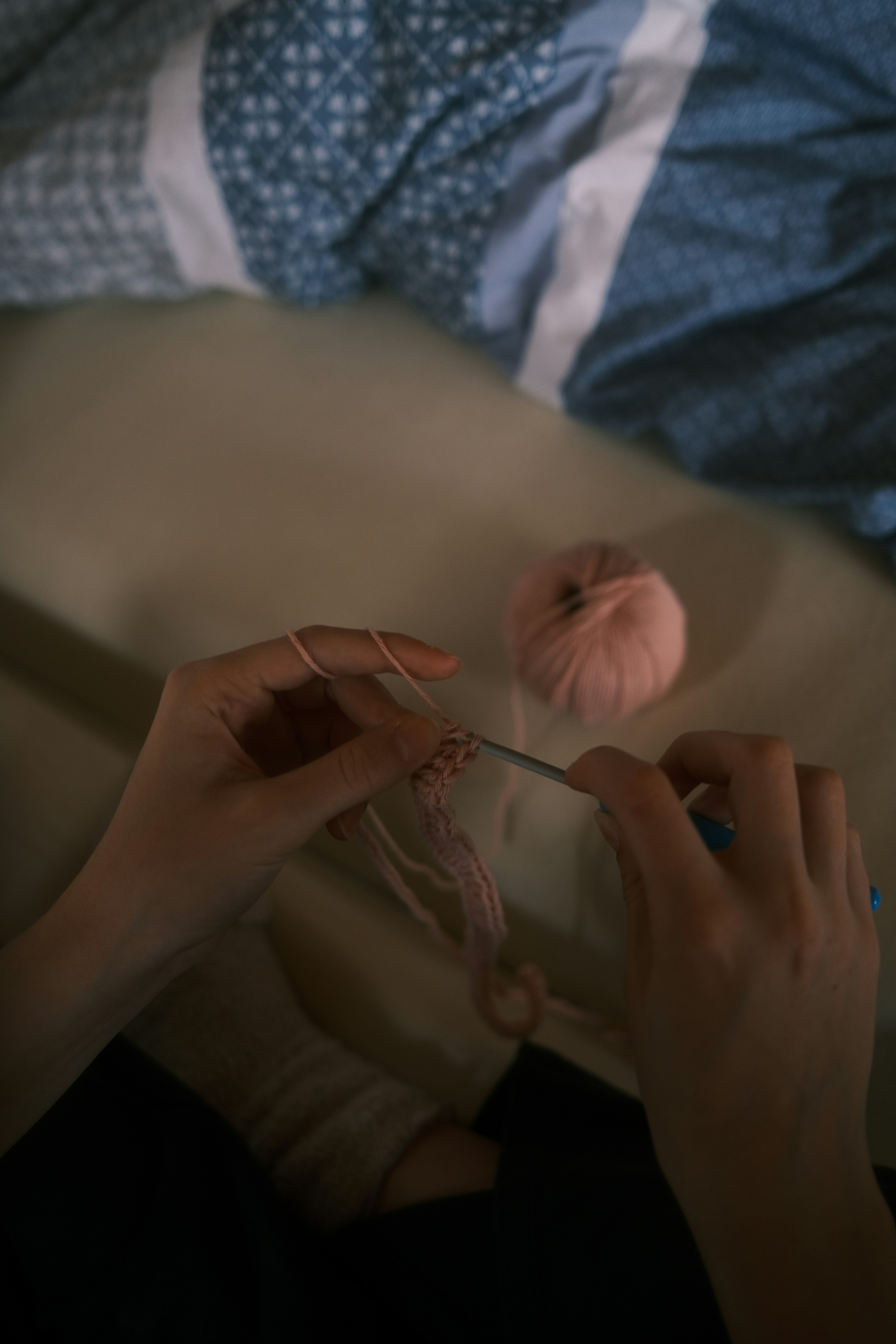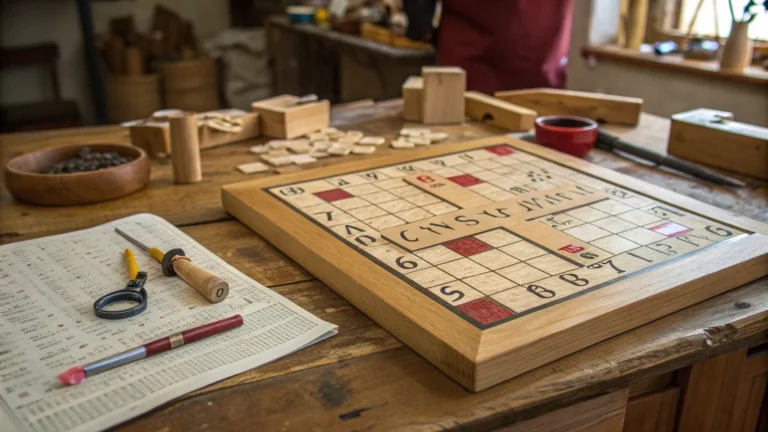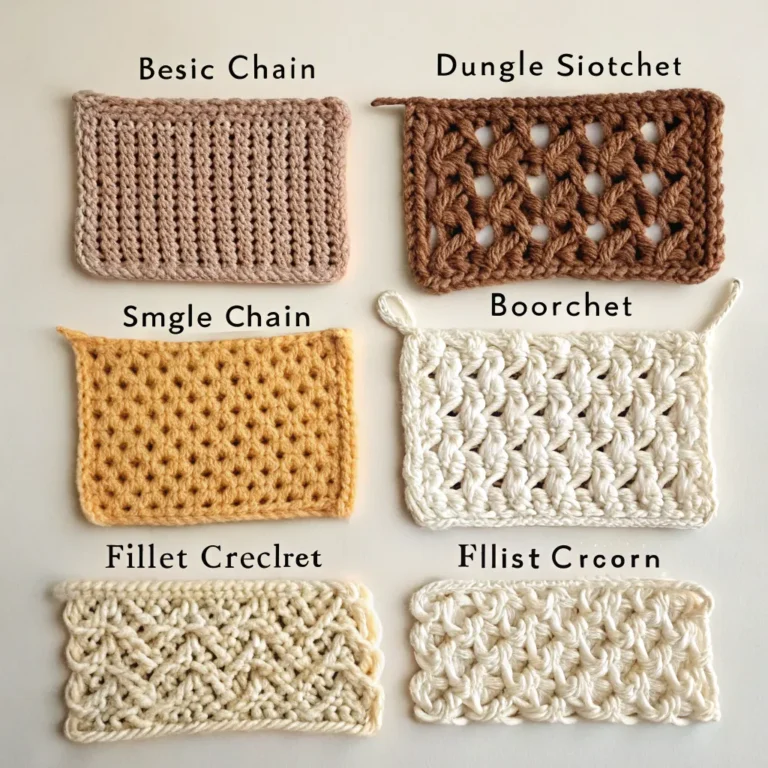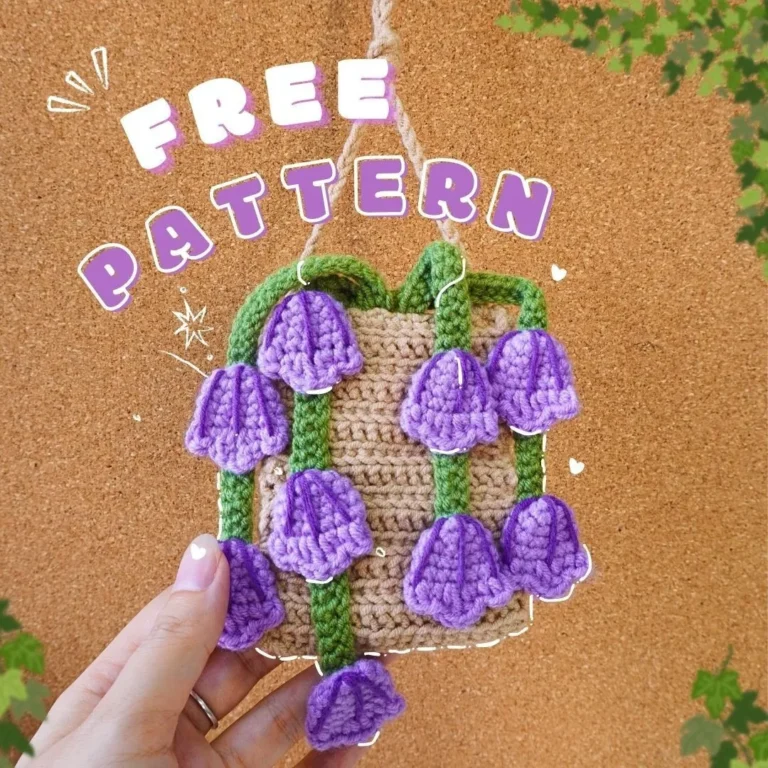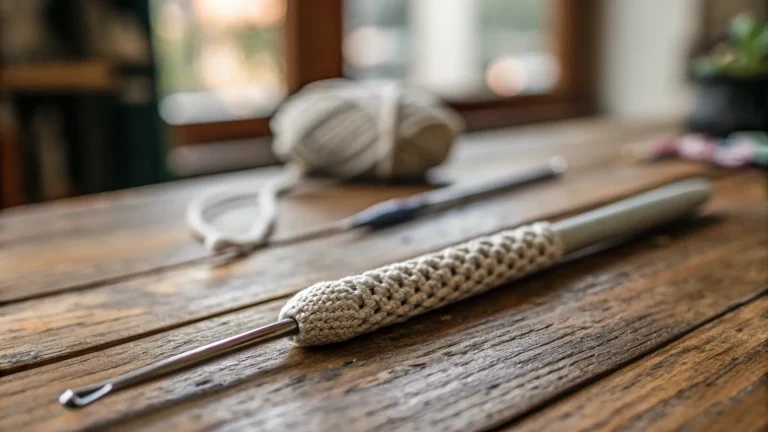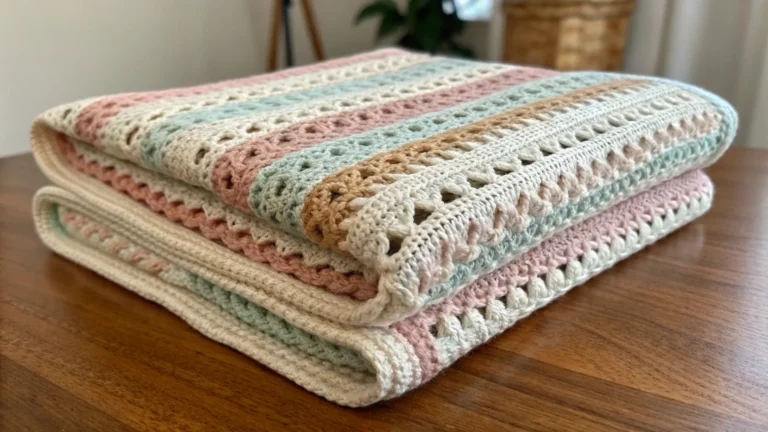Half double crochet
Introduction to Half Double Crochet
The half double crochet (HDC) stitch occupies a special place in the realm of crochet, acting as a bridge between single and double crochet stitches. As a versatile and user-friendly stitch, it carries its own unique characteristics that differentiate it from its counterparts. The HDC offers a balance of height and density, resulting in a fabric that is neither too tight nor too loose, making it ideal for various crochet projects.
One of the distinguishing features of the half double crochet stitch is its height. Unlike the single crochet, which creates a denser texture, the HDC results in a slightly taller stitch, providing more flexibility while still maintaining structural integrity. This is particularly useful in projects where a balanced drape is required, such as blankets, scarves, and garments. On the other hand, compared to double crochet, the HDC is shorter, allowing for greater control over the fabric’s appearance without sacrificing comfort.
The half double crochet stitch is well-suited for numerous applications in crochet patterns. It can be utilized effectively in both intricate designs and simple projects, making it a favorite among beginners and experienced crocheters alike. Patterns that incorporate HDC can yield stunning textures and innovative designs, whether they are for home décor items, wearables, or accessories. Its adaptability ensures that the stitch remains relevant, regardless of evolving crochet trends.
Moreover, mastering the half double crochet stitch opens the door to a world of creative possibilities, enabling crafters to explore complex stitch variations and intricate patterns. By grasping the nuances of the HDC, crocheters can enhance their skills and expand their repertoire, enriching their overall experience and enjoyment of this timeless craft. Understanding the significance and versatility of the half double crochet stitch is essential for anyone looking to deepen their crochet journey.
Supplies Needed for Half Double Crochet
To successfully master the half double crochet stitch, it is essential to gather the appropriate supplies before beginning your crochet project. The primary items you will require are yarn, a crochet hook, and additional tools to facilitate the process.
When selecting yarn for your half double crochet endeavors, consider the type of fiber and its weight. Yarn is available in various fibers such as acrylic, cotton, wool, and blends, each providing unique qualities in terms of texture and drape. For beginners, acrylic yarn is often recommended due to its affordability and ease of care. It also comes in a wide range of colors, making it an attractive option. Fibers like cotton can offer superior stitch definition, making them excellent for more advanced crocheters seeking intricate designs. Common yarn weights for half double crochet projects include worsted and bulky, which promote fast and enjoyable crocheting experiences.
The next crucial supply is a crochet hook, which should be compatible with your chosen yarn. For most worsted weight yarns, a hook size of 5.0 mm (H-8) is standard, while thicker yarns may require a larger hook, such as a 6.0 mm (J-10). Beginners might benefit from a set of varying hook sizes to provide flexibility in gauge adjustment and to accommodate different yarn weights.
Besides yarn and hooks, consider acquiring tools like stitch markers to help keep track of your rows, as well as scissors for cutting your yarn when necessary. A yarn needle is also recommended for weaving in ends and finishing your project neatly. With the right supplies at hand, both novice and seasoned crocheters can confidently embark on their half double crochet journey.
How to Execute the Half Double Crochet Stitch
The half double crochet stitch is a versatile and essential technique in the realm of crocheting. To perform this stitch, it is crucial to follow a step-by-step approach to ensure accuracy and consistency. Start by making a slip knot and placing it on your crochet hook. Next, chain two additional stitches; this will create the foundation for your project.
To begin the half double crochet, yarn over your hook, which means you will wrap the yarn around the hook from back to front. Insert the hook into the third chain from your hook. It is essential to locate the correct chain to maintain the integrity of your initial row. This step can be tricky for beginners, so ensure that you are working in the right space. After inserting the hook, yarn over once more and pull through the chain, creating three loops on your hook.
Now, yarn over again, and this time, pull through all three loops on your crochet hook in one motion. Congratulations, you have just completed your first half double crochet stitch! To continue with your project, repeat the process: yarn over, insert the hook into the next stitch, yarn over again to pull through, and then yarn over once more to finish the stitch.
Maintaining proper tension is crucial for achieving a uniform appearance. Ensure you are not pulling too tight or too loose, as this can affect the size of your stitches. Additionally, practice will help you develop a rhythm, which contributes to a more consistent look in your crocheted fabric. As you proceed with your work, take time to review and adjust your technique, enabling you to master the half double crochet stitch effectively. By embedding this process into your crocheting routine, you will enhance your skills and create beautiful, textured pieces.
Common Mistakes to Avoid
When learning the half double crochet (HDC) stitch, it is not uncommon for beginners to encounter specific pitfalls that can hinder their progress. Identifying these mistakes early can significantly enhance one’s crocheting experience and mastery of this technique. One prevalent issue is incorrect tension, which can lead to either overly tight or excessively loose stitches. To achieve the proper tension, it is advisable to practice with various yarn types and hook sizes until a comfortable grip is established. Maintaining consistent tension is crucial for achieving a uniform fabric.
Another frequent mistake occurs during the yarn over process. Beginners may inadvertently create an incorrect yarn over, which can cause issues in the stitch formation. The correct technique for a half double crochet involves yarn over before inserting the hook into the stitch. To rectify this mistake, it is essential to remember the sequence clearly: yarn over, insert the hook, yarn over again to pull through, and finally yarn over one last time to complete the stitch. Proper execution of these steps will result in clean, well-defined stitches and an aesthetically pleasing fabric.
A related concern is stitch count errors, which often stem from missed stitches or adding extra stitches inadvertently. Such errors can lead to uneven edges or an unintended shape in the finished piece. Counting stitches consistently after each row is a best practice to ensure accuracy. If a mistake is detected, it’s vital to unravel to the last correct stitch to maintain the desired stitch count. Being mindful of these aforementioned common mistakes will aid beginners in honing their skills effectively. By understanding and addressing these issues, crocheters can enhance both their technique and creative output while mastering the half double crochet stitch.
Half Double Crochet Variations
The half double crochet (HDC) stitch, a versatile technique, offers several variations that can enhance both the texture and appearance of your projects. By modifying the basic stitch, crocheters can create distinct visual effects and introduce new textures that add depth to their work. This section will explore some popular HDC variations, including the HDC in the back loop only, HDC in the front loop only, and textured HDC stitches.
First, the HDC in the back loop only (BLO) creates a subtle ridge, adding an interesting texture to any piece. By inserting the hook only into the back loop of the stitch below, crocheters can develop a neat and organized look while maintaining the traditional height and characteristics of the HDC. This technique is particularly useful for creating defined patterns, bags, or even stylish hats, as the ridges offer a unique aesthetic that can elevate the design.
Conversely, working the HDC in the front loop only (FLO) yields a visually striking effect that stands out prominently. This method allows the back loops of previous stitches to remain unworked, resulting in a series of raised stitches that create a pronounced texture. The FLO variation can be effectively utilized in various projects, such as blankets and garments, enhancing their overall appearance while introducing engaging patterns and shapes.
Additionally, textured HDC stitches can be woven into your crochet repertoire. Techniques such as the HDC cluster or the HDC popcorn stitch generate intricate design elements, transforming standard rows into eye-catching focal points. These textural variations not only enhance the visual appeal of your projects but also invite tactile interaction, offering a unique experience for the end-user. Thus, exploring these variations of the half double crochet stitch can significantly enrich your crocheting skills and project outcomes.
Incorporating Half Double Crochet into Projects
The half double crochet (HDC) stitch is a versatile and practical technique that can enhance a variety of crochet projects. Its unique height—higher than a single crochet but lower than a double crochet—makes it an ideal choice for items that require a balance of density and softness. To fully appreciate the HDC stitch, consider several project ideas where it can be effectively utilized.
Blankets are one of the most popular items where half double crochet can shine. Using this stitch creates a cozy texture while allowing for quick progress. Because of its efficiency, a large blanket can be completed faster than with other stitches. Moreover, the flexibility of the HDC stitch enables you to create various patterns, including chevrons or simple stripes, combining it with other crochet techniques for added interest.
Scarves and shawls represent another excellent opportunity to incorporate the half double crochet stitch. Whether working in rows or in the round, HDC provides a beautiful drape and texture, making it suitable for both warm winter accessories and lightweight summer wraps. When adapting existing scarf patterns, you can replace traditional stitches with HDC or combine it with other stitches to create unique, textured fabric.
Garments, including sweaters and vests, can also benefit from the half double crochet stitch. This technique offers stretch and comfort, making it suitable for various clothing types. When modifying patterns, keep in mind that using HDC can slightly alter the pattern’s fit due to its unique height. Consider swatching before diving into a full garment to assess how the stitch affects the overall design. With thoughtful adaptation, the HDC stitch can play a vital role in achieving your desired look and fit for any project.
Combining Half Double Crochet with Other Stitches
The half double crochet stitch is a versatile technique that can effectively enhance your crochet projects when combined with other types of stitches. By integrating the half double crochet with single and double crochet stitches, as well as more intricate techniques, crocheters can create stunning textures and patterns that add depth to their work. This blending of stitches not only provides aesthetic appeal but also allows for the manipulation of fabric characteristics, such as tension and drape.
For example, when alternating between half double crochet and single crochet, one can achieve a subtle texture that works beautifully in various projects, from blankets to garments. The half double crochet’s height complements the shorter single crochet, producing a rhythm that can elevate the design. Conversely, pairing half double crochet with double crochet gives a more pronounced texture that adds flair and visual interest. The taller double crochet stitches contrast well with the half double crochet, creating a dynamic fabric that maintains structural integrity.
When combining these stitches, it is essential to consider the overall cohesion of the pattern. Pay attention to the number of stitches and rows, as well as the tension, to ensure a consistent look throughout your project. It may be helpful to create a swatch that incorporates your chosen combination of stitches before embarking on the final piece. This will enable you to visualize how the stitches interact with each other while also allowing you to make any necessary adjustments in your technique.
Ultimately, experimenting with the half double crochet alongside other stitch types invites endless creativity in your crochet endeavors. By doing so, you open yourself to a world of possibilities, transforming simple patterns into masterpieces infused with richness and texture.
Troubleshooting and Tips for Mastery
Mastering the half double crochet stitch can be a fulfilling endeavor, but it often comes with its own set of challenges. To enhance your crochet skills, it is essential to engage in consistent practice and adopt effective strategies. One of the most common hurdles faced by beginners is maintaining a consistent gauge. A variable gauge can lead to uneven stitches, impacting the overall appearance of your project. To counter this, be sure to use the same yarn type and hook size consistently. Taking the time to crochet a gauge swatch can also help, as it allows you to identify any discrepancies early on.
Another beneficial practice is to develop muscle memory, which is crucial for improving your speed and precision. To build this memory, start with repetitive exercises focused on the half double crochet stitch. For instance, choose a simple pattern or create a series of small swatches that utilize this stitch exclusively. This will enable your hands to become familiar with the movements required, leading to increased proficiency over time.
In addition to practice, consider visual aids and tutorials. Video demonstrations of the half double crochet stitch can provide valuable insights into proper technique, making it easier to grasp if you are struggling with written instructions. Joining crochet communities online or attending educational workshops can also foster learning through peer support and feedback. Don’t hesitate to ask experienced crocheters for advice or tips when facing challenges.
By implementing these troubleshooting strategies and utilizing available resources, you will not only refine your technique but also gain confidence in your ability to successfully execute the half double crochet stitch. Over time, the combination of practice, proper gauge, and community support will undoubtedly lead to mastery.
Conclusion: Embrace the Half Double Crochet Stitch
The half double crochet (HDC) stitch is a vital technique in the crochet toolkit, offering both versatility and ease for crafters of all skill levels. This stitch strikes an ideal balance between the single and double crochet stitches, granting a fabric that is both sturdy and flexible. By mastering the half double crochet, crocheters can enhance their projects with texture and depth while working efficiently across various patterns and designs.
Throughout the exploration of the half double crochet stitch, it becomes evident that it serves multiple purposes, making it adaptable for a variety of projects. Whether incorporating HDC into garments, accessories, or home decor, this stitch can elevate your work to a new level. It is particularly advantageous for those seeking to create a thick and warm fabric without consuming too much time, as it allows for quicker progress compared to other stitches.
Furthermore, practicing the half double crochet stitch enables crocheters to develop a deeper understanding of tension and fabric manipulation. Experimenting with different yarn weights and hook sizes when working with HDC opens up a world of creative possibilities. Whether you choose to utilize this stitch in a textured blanket, a stylish scarf, or as part of a more intricate design, the benefits are numerous.
In conclusion, embracing the half double crochet stitch can truly enrich your crochet experience. Take the time to practice this vital technique, and you will discover its many applications in various projects. With persistence and creativity, the half double crochet stitch can become a fundamental aspect of your crochet repertoire, allowing for continued growth and satisfaction in your crafting journey.

